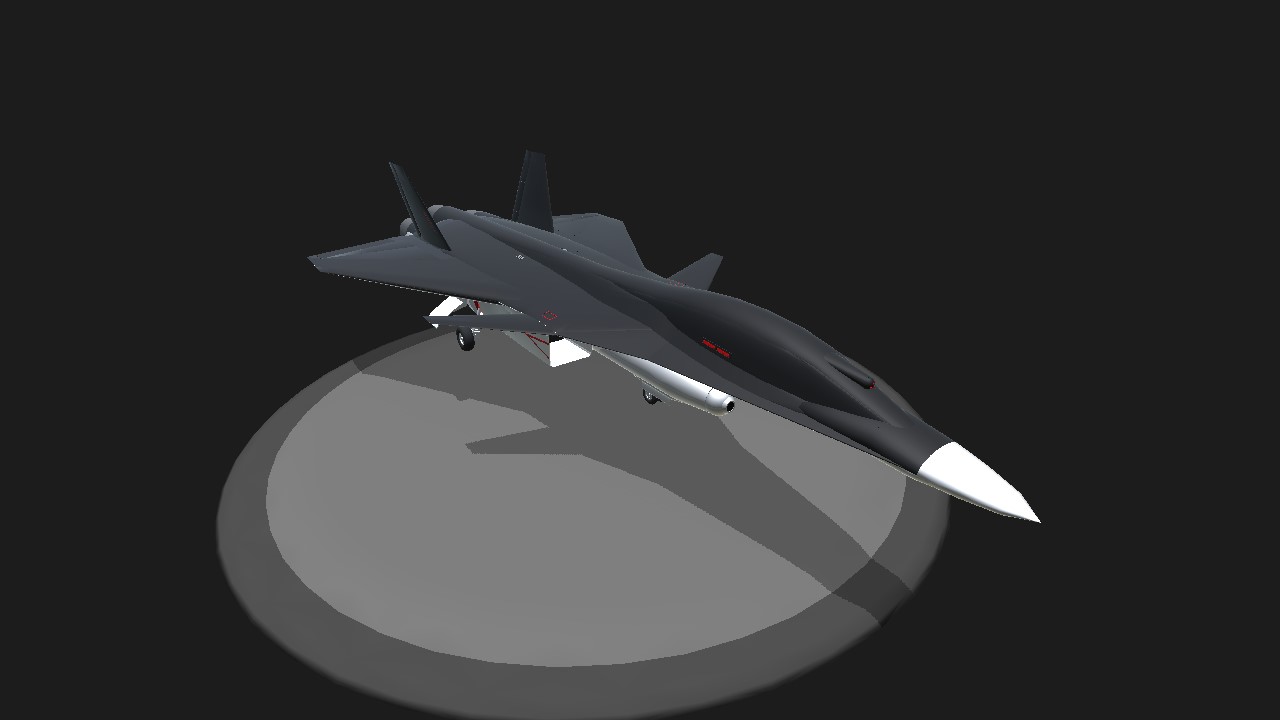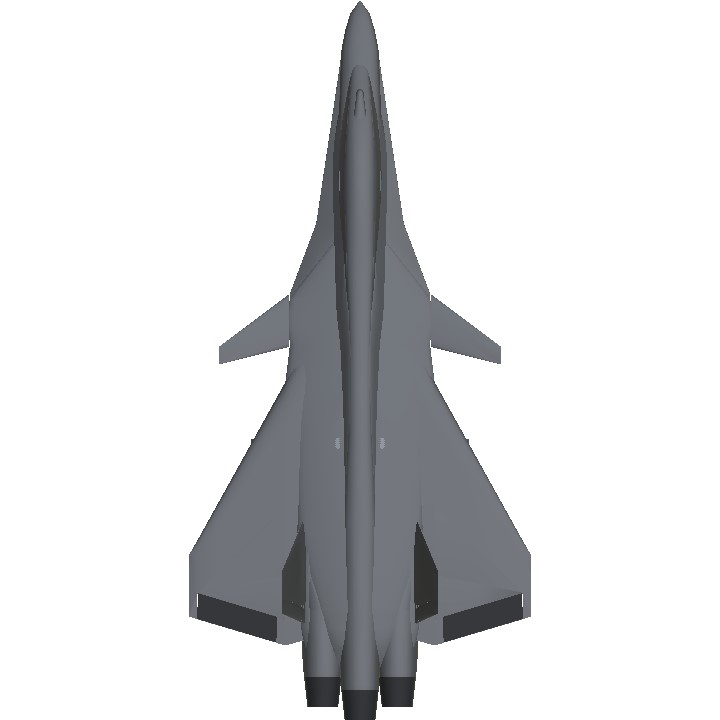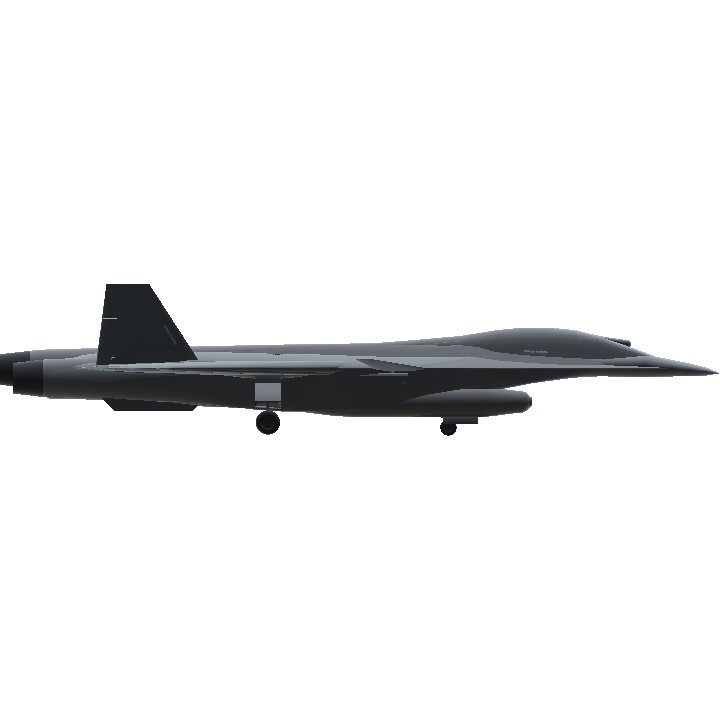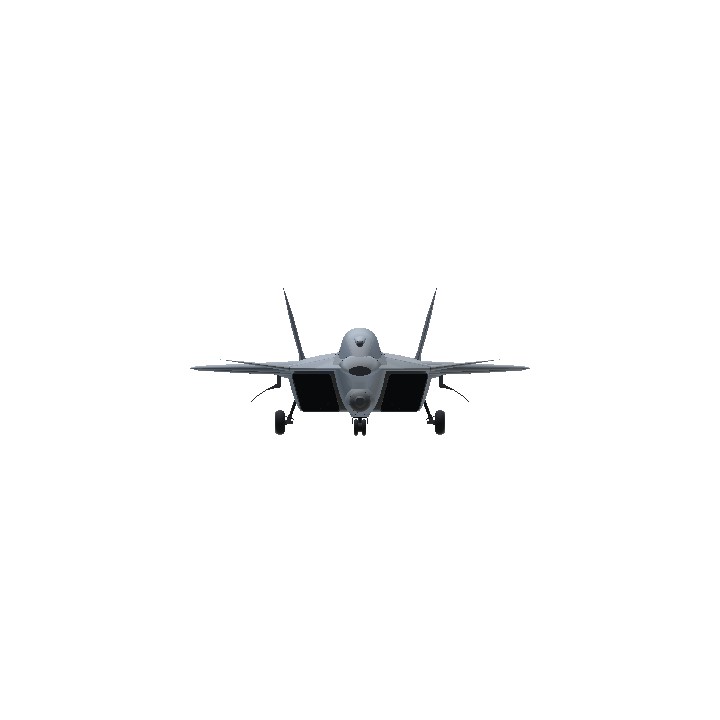! --- This is NOT the latest version of the aircraft! Do NOT publish it!
AQF-23-B Banishment
Interceptor/Attacker
Flight Operation
CONTROLS
Standard aircraft controls
Trim - Trim (fine pitch)
Brake - Airbrake (vertical stabilizer)
AG5 - Additional animation
AG7 - Formation lights
NOTES
- Pitch and roll rate decrease as IAS increases.
- More stable at high IAS, best over 1000 km/h (540 knots) IAS. Not suitable for dogfighting.
- Additional animation overrides flight controls when the IAS is very low.
- Not suitable for carrier operation.
CREDITS
- Laser and reticle rotation controller modified from @PlanariaLab
- Pitch G-limiter modified from @moistcottonbud
DEV NOTES
Traditional style. Or retro-futuristic style? Lots of smoothing. I got this idea for a multi-dynamic laser. Its output changes over time, and the beam tracks the target. Unfortunately, the beam only looks correct in the worst possible graphics settings.
Also, finally a "good" camo, imagine that. It's also the colors of an Ordinary Magician.

Laser Operation
The TSLG (Tactical Strike Laser, Guided) system is very powerful, but only in the hands of a skillful pilot.
AIMING
- When a target is selected, automatic aiming is provided by the Para-chan system. The reticles contain two pairs of Para-chan inputs.
- The TSLG has an elevation range of +5°/-15°, and a traverse range of 15° to either side. This rotation range is shown when a target is selected.
- The angular velocity of the TSLG is 16°/s, but decreases to 3°/s when it is being fired.
- In the cockpit camera, the current rotation of the TSLG is shown in the plus-shaped (+) reticle.
- If the target rotation is not reachable by the TSLG (outside its rotation range), a cross-shaped (X) reticle will appear. This reticle DOES NOT indicate if the TSLG is not currently facing the target, nor does it indicate if the TSLG is cooling down.
- Smooth inputs are the key to maintaining a lock on the target. Sometimes, the beam will stay near the target, without hitting it. In this case, try to shake the aircraft.
- The TSLG is easiest to use at longer ranges of at least several kilometers. With some practice, it is possible to use it in a dogfight.

OUTPUT
- On each use, the TSLG takes a second to warm up, during which its energy output will be almost negligible. This behavior occurs regardless of the intended output duration of the pilot.
- If active for too long, the energy output of the TSLG will automatically be interrupted, shown as a gradual decrease in energy output over a second. The maximum active duration is 8 seconds, and the maximum cooldown duration is 10 seconds.
- The maximum energy output of a single burst is enough to sink most ships, while the maximum power output can destroy most aircraft instantly. Within 10 km, peak power is applied on the target.
- The intended appearance of the beam is achieved with a mobile device on low graphics settings. It may not be achievable with a PC or future versions of the game.

Information
The AQF-23 Banishment is a smart drone that can perform the roles of an interceptor or fighter, and occasionally, of an attacker.

Specifications (AQF-23-B)
Length: 20.50 m
Wingspan: 9.75 m
Height: 3.81 m (landing gear retracted, weapons bay closed)
Empty Mass: 21,500 kg
Max. Safe Mass: 32,500 kg
Max. Loading: +12 G
Max. Speed: Mach 1.8
Crew: 0
Production (AQF-23)
Developers: Team Banishment (HAMEKA)
Units Produced: 45
Unit Cost: $55 million (AQF-23-A)
For over half a century, all implementations of a laser on a production light aircraft have always been fixed to face forwards. While small aircraft were more maneuverable, the fixed laser was difficult for even the best pilots and AI to get on target. Additionally, small aircraft could not support the increased weight and drag of a guided laser, or would suffer a heavy loss in terms of maneuverability.
The AQF-23 would be the first light aircraft to overcome this issue. The "A" variant was equipped with the AALG (Anti-Aircraft Laser, Guided), and would prove to be formidable against aircraft and light ground targets up to about 10 km away. This high-power laser could acquire a lock on any target in its 90°-wide field of view, and face the target within two seconds. While the built-in laser was lighter than hardpoint-based laser pods, it was not removable.

As the potential of the rotating laser was realized, a "B" variant was soon released, with the TSLG (Tactical Strike Laser, Guided) system. The power of the laser was much greater than that of the AALG - the TSLG would burn a hole through tank and warship armor in seconds. This however came with a few downsides:
- The rotation rate and range were drastically reduced due to the heavier and more complicated assembly.
- The laser now required a second to "warm up", during which it produced a beam of less power than that of the AALG.
In addition to their respective laser weapons, each AQF-23 has two small internal weapons bays. This would help to offset the drag produced by the laser dome. The jets could be equipped with wing hardpoints, but in practice, this was never done.
Both variants were well received, and performed well in combat, but the high development costs and weapon class taxes meant that few of these machines were produced.
Specifications
General Characteristics
- Predecessor !ss6_dev10
- Created On Android
- Wingspan 32.0ft (9.8m)
- Length 67.3ft (20.5m)
- Height 14.2ft (4.3m)
- Empty Weight 12,581lbs (5,706kg)
- Loaded Weight 35,505lbs (16,105kg)
Performance
- Power/Weight Ratio 2.943
- Wing Loading 58.3lbs/ft2 (284.5kg/m2)
- Wing Area 609.3ft2 (56.6m2)
- Drag Points 3193
Parts
- Number of Parts 503
- Control Surfaces 2
- Performance Cost 1,944





